So Many Options
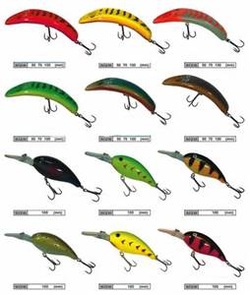
In the first half of our meeting, Capt. Toney covered the basics of the Spotted Seatrout species and the gear he recommends to help us increase the chance of catching them and getting them to the boat. Now it was time to zone in on the array of baits and lures available to attract them. There are so many options but he narrowed them down for us and began by warning us that "lures were designed to catch fisherman first, fish second" - which made perfect sense, actually. But, you have to find the fish before you can entice them to bite. It doesn't matter what bait or lure you use if there are no fish around in the first place.
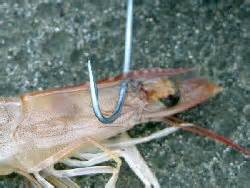
Live shrimp on a 2/0 circle hook and secured to fishing line by an improved clinch knot are always the most popular bait on the Nature Coast, but buying live shrimp every time you go fishing can get expensive over time and during certain times of the year bait fish will devour them right off your hook before a target fish ever knew it was there. Live shrimp are best reserved for the spring time when the water is still a little too cool for bait fish to be around.
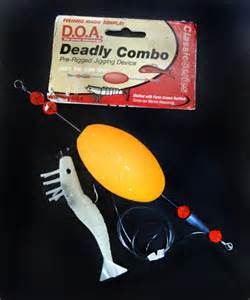
This DOA Deadly Combo Popping Cork with a 'glow' colored artificial shrimp is one of the most popular ways to catch trout in this area. They come pre-packaged so all you have to do is tie it to your fishing line. The sound that this set-up makes on the water attracts trout for some reason and the glow color of the shrimp seems to be one of the trout's favorite. A few other colors that are just as effective are listed below. The artificial shrimp can be used with or without a popping cork, the 'pop' of the cork just adds the extra element of sound.
If you use the DOA 3" shrimp without the popping cork, the small weight inside (called a belly weight) allows it to fall in a smooth, slow horizontal fashion. They are also 'scented' during the manufacturing process so they can imitate the look and smell of live shrimp. As the lure is attacked, nibbled on and chewed on, more of the scent is released. This can save you the extra cost (and frustration) of buying dozens of live shrimp only to have them all eaten by pinfish within the first hour of fishing. Some of the most popular colors are listed below:
If you use the DOA 3" shrimp without the popping cork, the small weight inside (called a belly weight) allows it to fall in a smooth, slow horizontal fashion. They are also 'scented' during the manufacturing process so they can imitate the look and smell of live shrimp. As the lure is attacked, nibbled on and chewed on, more of the scent is released. This can save you the extra cost (and frustration) of buying dozens of live shrimp only to have them all eaten by pinfish within the first hour of fishing. Some of the most popular colors are listed below:
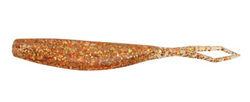
The D.O.A. 4" jerk baits are called "soft plastics" and they are so versatile that you can rig them for top-water or subsurface. They can also be used with jig-heads or positioned on a weedless hook, too.
This soft plastic lure in 'glow' color (below) is one of Capt. Toney's favorite "go-to" baits. He will simply 'nose-hook' them (see below) on a 2/0 circle hook, tied to the leader line with a Canoeman's Loop Knot, cast them out and slowly retrieve...no weight, no scent. You'd be surprised at how well this works as simple as it is. The loop knot that you tie is one of the reasons these artificial baits work so well. It allows the lure to mimic the natural movement of a bait fish and this is what provokes an instinctive strike on the lure. One more step you can make to increase or "stack-the-odd" in your favor is to add a small amount of scent to it or invest in a package of Gulp brand bait that is already pre-scented.
Next on the agenda was an impromptu canoe-man loop knot tying session!!
This soft plastic lure in 'glow' color (below) is one of Capt. Toney's favorite "go-to" baits. He will simply 'nose-hook' them (see below) on a 2/0 circle hook, tied to the leader line with a Canoeman's Loop Knot, cast them out and slowly retrieve...no weight, no scent. You'd be surprised at how well this works as simple as it is. The loop knot that you tie is one of the reasons these artificial baits work so well. It allows the lure to mimic the natural movement of a bait fish and this is what provokes an instinctive strike on the lure. One more step you can make to increase or "stack-the-odd" in your favor is to add a small amount of scent to it or invest in a package of Gulp brand bait that is already pre-scented.
Next on the agenda was an impromptu canoe-man loop knot tying session!!
The Capt. gave us a 17 page D.O.A. catalog to thumb through in our spare time. For more information on the D.O.A. brand, visit www.doalures.com
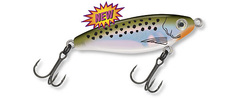
Another one of Capt. Toney's favorite lures when he fishes the back country of Ozello is The MirrOlure MirrOdine® C-Eye Pro series lure. It features natural clear 3-D eyes, contemporary fish-catching finishes and premium black nickel hooks. Just like all of the other MirrOdines®, the C17MR has that bright, reflective, luminescent insert that attracts fish. It's a suspending bait which means that it falls slowly so it's okay to use in shallow water as long as you keep it moving during retrieval so it doesn't get hung up in grass. With a twitching retrieve, this shallow runner darts from side-to-side, mimicking a wounded baitfish. Typically, the strike will come between the twitches. Trout, Redfish, Snook, Striped Bass and Tarpon find the C-Eye MirrOdine® to be irresistible. Below are more options to look at.
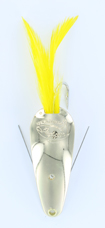
From there we moved on to spoons. Capt. Toney found common ground on that subject with our resident spoon expert, Martha Ann - the gal that hauled in a 33 inch redfish during the Nature Coast Challenge Kayak Fishing Tournament last month. She is a die-hard believer in the effectiveness of spoons. Although this lure is primarily used when targeting redfish, trout seem to be attracted to it, too. Eppinger is the brand that he uses because it's one of the oldest American spoon manufacturers there is. His overall favorite is the gold spoon with a red hackle (feather) but this particular lure comes with a split ring so it's one of those rare occasions that he recommends using a 10-20 lb swivel to connect it to your leader line. This will eliminate line twists and tangles right there. When he's targeting trout, though, he uses a copper spoon with a chartreuse hackle. There's just something about that chartreuse color that drives trout mad! If you use the 1/4 oz size, it is slower to sink so you can use it in shallow water just as long as you start reeling in before it hits the bottom so it doesn't catch on any weeds or grass. You can twitch it a time or two if you want, just to change the action up a little, but it's really designed to be retrieved straight and steady. The vibration it makes underwater is sometimes enough to attract a fish and you can cover a lot of ground in a kayak using this as a search lure. If you get a strike or two, chances are there are more fish in the area.
Now that we covered a lot of bait and lure options, we moved on to weather and season differences. This info will be presented in Part 3...







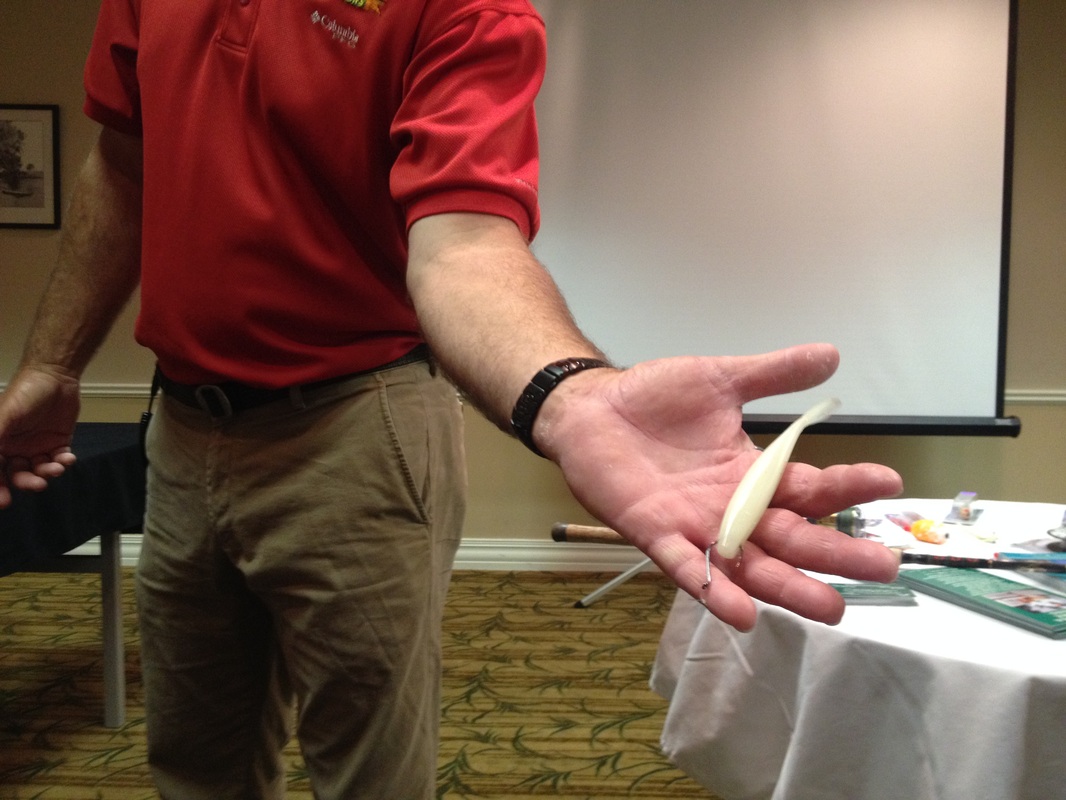
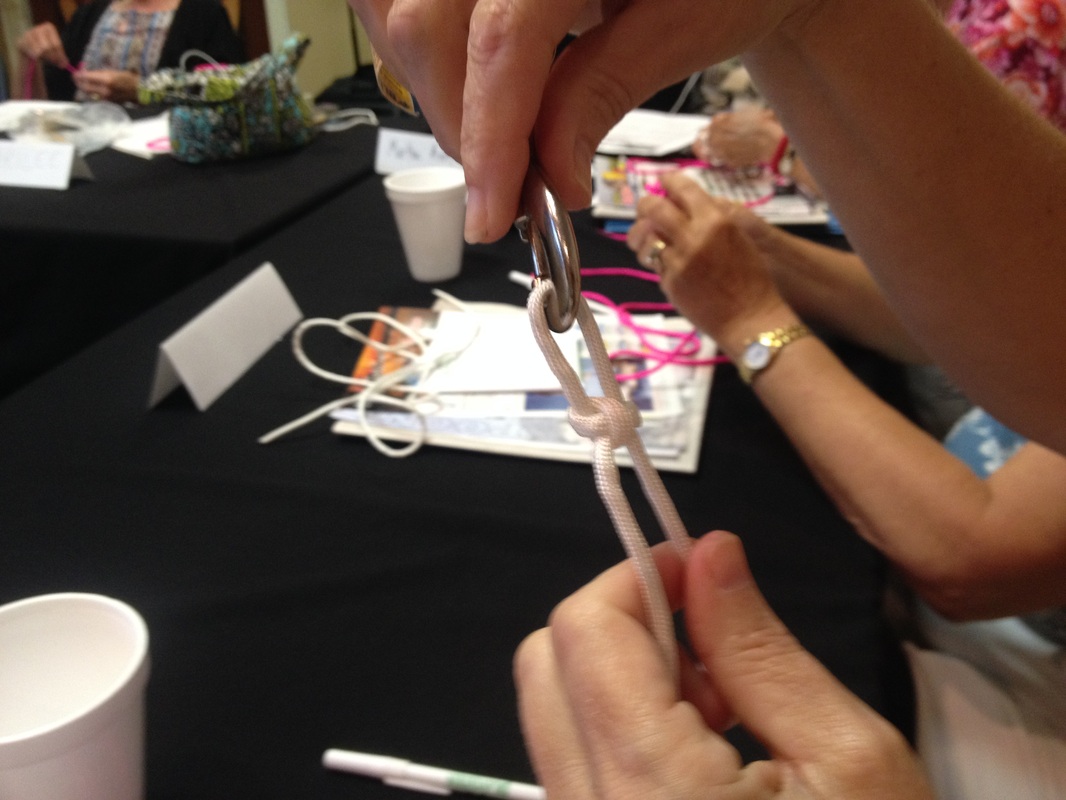
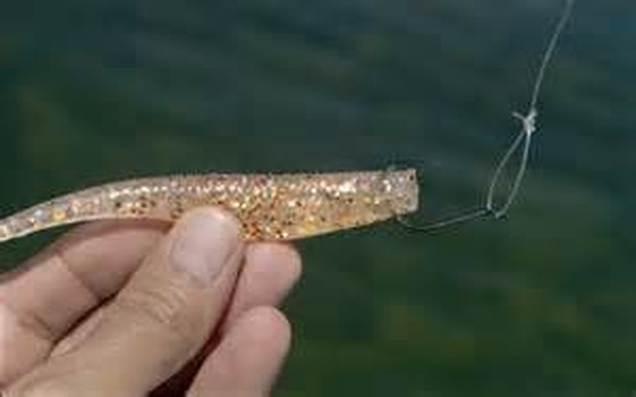
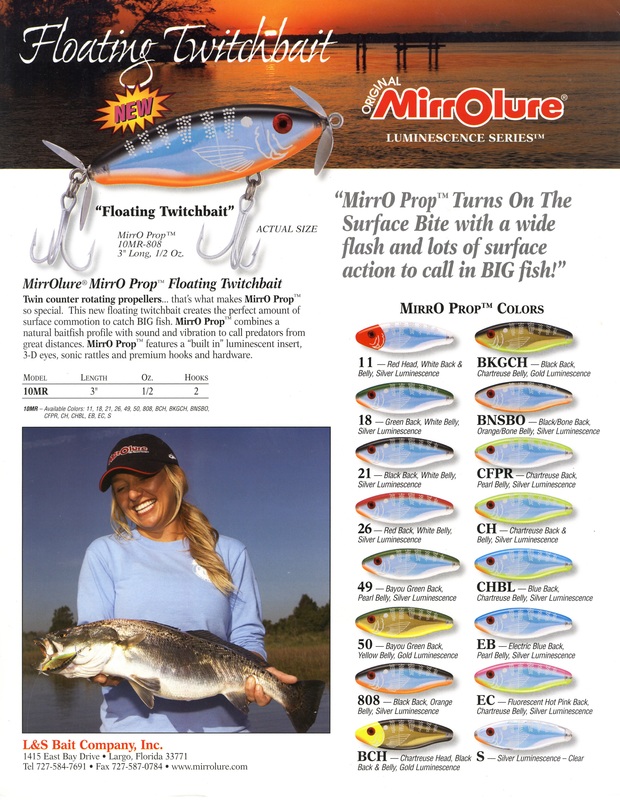
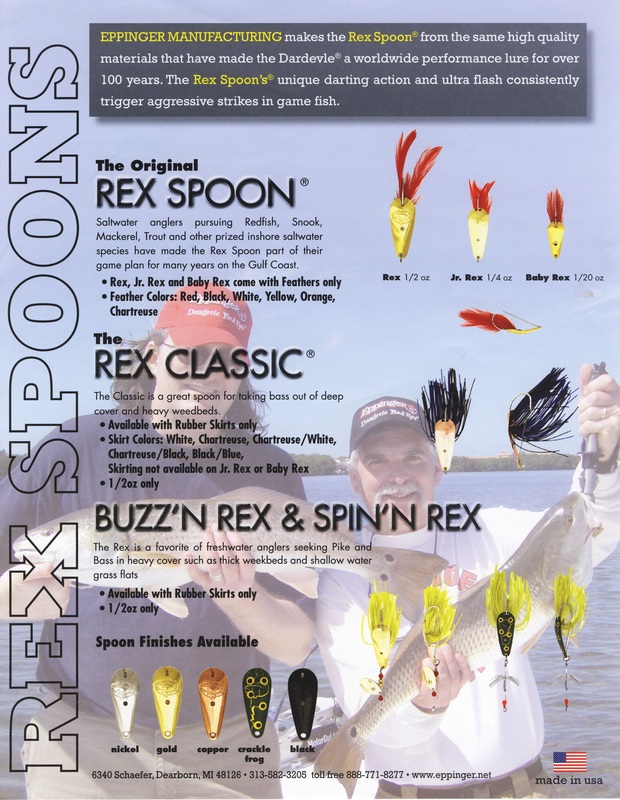
 RSS Feed
RSS Feed